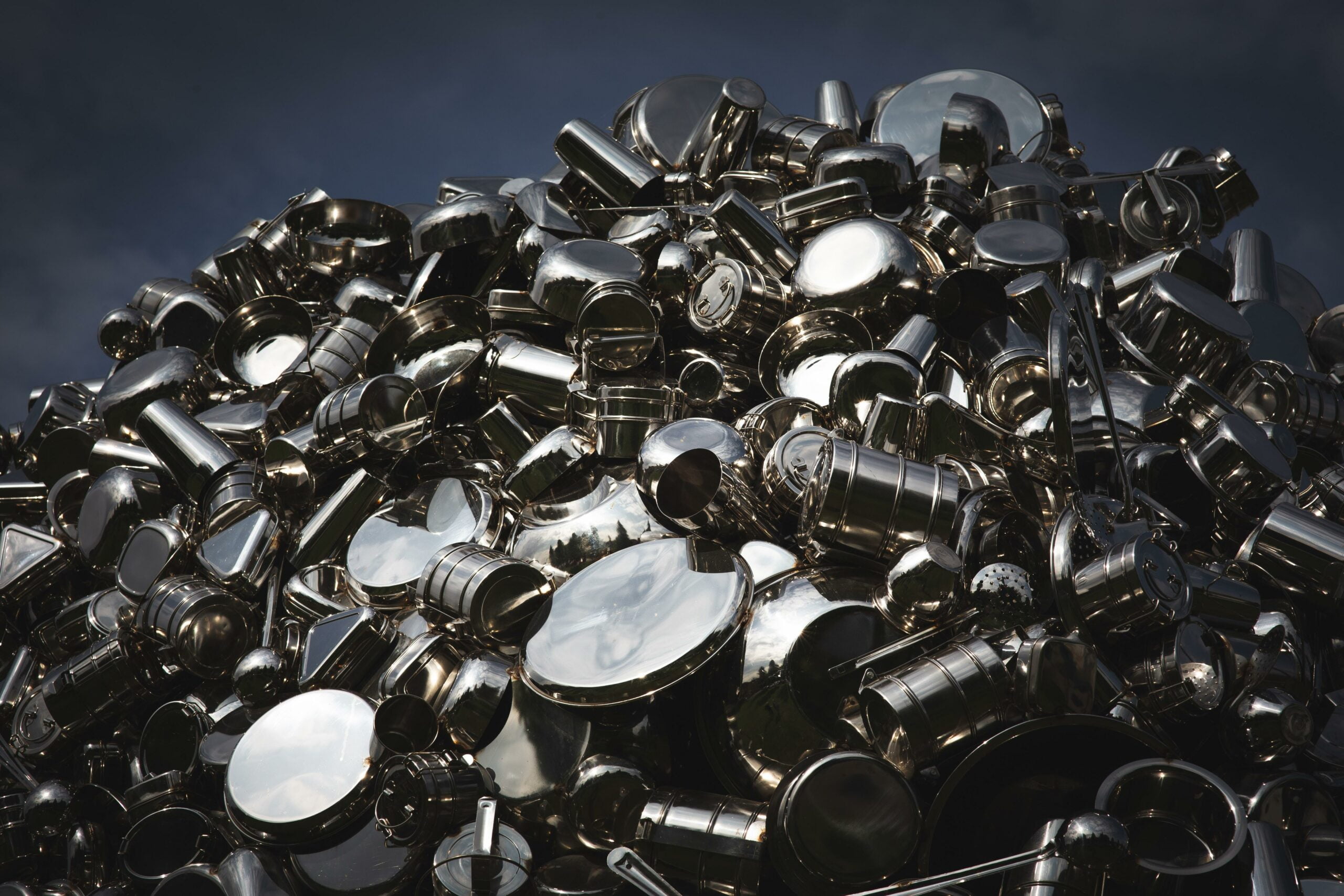Are you ready to dive into the fascinating world of stainless steel? Get ready to be amazed as we unlock the secrets behind this incredible metal alloy. In this article, we will uncover five intriguing facts about stainless steel that will leave you in awe. From its unique properties to its wide range of applications, stainless steel is a material that is both versatile and captivating. So, fasten your seatbelts and join us on this journey as we unveil the lesser-known aspects of stainless steel—an alloy that has revolutionized numerous industries. Get ready to discover five interesting facts about stainless steel that will undoubtedly pique your curiosity!

5 Interesting Facts About Stainless Steel
Stainless steel has long been a staple in industries ranging from construction to automotive manufacturing. It’s a versatile and durable material, but there’s so much more to it than meets the eye. In this article, we will uncover five intriguing facts about stainless steel that will shed light on its lesser-known aspects. So, let’s dive in and unlock the secrets of this fascinating alloy.
Fact 1: Stainless Steel – The Master of Resistance
One of the most remarkable qualities of stainless steel is its resistance to stains and rust. This is thanks to its high chromium content, which forms a protective layer on the surface of the metal. However, it’s important to note that stainless steel is not completely rust-proof. In certain conditions, such as exposure to corrosive substances or high temperatures, it can still succumb to corrosion. Nevertheless, its ability to withstand staining and rusting makes it a go-to choice in various applications, from kitchen utensils to architectural structures.
“Stainless steel’s resistance to stains and rust is a testament to its exceptional durability, ensuring its longevity in diverse environments.”
Fact 2: The Magnetic Mystery of Stainless Steel
Here’s a magnetic twist – not all stainless steel is magnetic. Contrary to popular belief, the magnetism of stainless steel depends on its composition. Austenitic stainless steels, which are non-magnetic, make up the majority of stainless steel grades. On the other hand, ferritic and martensitic stainless steels are magnetic. This magnetic or non-magnetic nature can be an essential consideration when selecting stainless steel for specific applications, like magnetic resonance imaging (MRI) machines or sensitive electronic devices.
“The magnetic properties of stainless steel unveil a hidden characteristic that impacts its suitability for various technological advancements.”
Fact 3: Banishing Odors with Stainless Steel
Did you know that stainless steel can deodorize strong odors from your hands? It may sound like magic, but it’s science at work. When you rub your hands on stainless steel under running water, the molecules responsible for pungent smells, like those from fish, onions, or garlic, bind to the surface of the steel. This phenomenon occurs due to the steel’s molecular structure, effectively neutralizing those unwanted odors. It’s a handy trick for any kitchen enthusiast!
“Stainless steel’s ability to banish stubborn kitchen odors demonstrates its extraordinary affinity for capturing and eliminating unwanted smells.”
Fact 4: Stainless Steel – A Green Crusader
Stainless steel not only showcases its brilliance through its performance, but it also boasts impressive environmental credentials. It is 100% recyclable, meaning it can be melted down and reused repeatedly without losing its valuable properties. This recycling process saves energy, reduces waste, and minimizes the need for virgin materials. The recyclability of stainless steel makes it an eco-friendly choice in an era where sustainability is a top priority.
“Stainless steel’s recyclability highlights its commitment to a greener future, proving that durability and environmental responsibility can go hand in hand.”
Fact 5: Stainless Steel, a Material with a Rich History
The rich history of stainless steel dates back to the early 20th century when a British metallurgist named Harry Brearley discovered it accidentally. He was tasked with developing a material that could resist corrosion for rifle barrels. Little did he know that his accidental creation would revolutionize multiple industries. Since then, stainless steel has found its way into iconic structures like the Chrysler Building and the Gateway Arch, earning its place as a material of choice for architectural marvels.
“The discovery of stainless steel by Harry Brearley exemplifies the power of serendipity, forever changing the landscape of countless industries.”
In conclusion, stainless steel is much more than just a durable alloy. Its resistance to stains and rust, magnetic properties, odor-neutralizing ability, recyclability, and fascinating history make it a material worth appreciating. Whether it’s in your kitchen, automotive parts, or skyscrapers, stainless steel continues to unlock new possibilities, blending science and artistry in a way that few other materials can.
So, the next time you encounter stainless steel, remember these intriguing facts and marvel at the secrets it holds beneath its gleaming surface.
“As we unveil the intriguing facts about stainless steel, we come to realize its seemingly endless potential and its remarkable ability to shape the industries it serves.”
Stainless steel is a material that has revolutionized various industries, from construction to kitchenware. It’s highly durable, corrosion-resistant, and most importantly, it adds a touch of elegance to any space. If you’re interested in learning fascinating facts about stainless steel, click here: facts about stainless steel. Discover how stainless steel is made, its unique properties, and the wide range of applications it can be found in. Don’t miss out on uncovering the secrets behind this remarkable material!
Stainless steel applications play a crucial role in various industries, offering incredible durability and resistance to corrosion. Whether you are in the construction, automotive, or medical field, understanding the versatility of stainless steel is essential. Check out our article titled “5 Interesting Facts About Stainless Steel” to uncover fascinating insights about this remarkable material. Discover how stainless steel has revolutionized different sectors and explore its endless possibilities. Gain valuable knowledge on the numerous applications and benefits of stainless steel by clicking here: stainless steel applications.
5 Fascinating Facts About Stainless Steel
[youtube v=”zh3m0WwQxpI”]
Introduction
Stainless steel, a material known for its resistance to stains and rust, has revolutionized various industries since its accidental discovery by Harry Brearley in 1871. In this article, we will explore five lesser-known facts about stainless steel that highlight its versatility and importance in today’s world.
Fact 1: The Strength of Steel
Did you know that stainless steel can be up to a thousand times stronger than iron in its purest form? This incredible strength is what sets it apart from other materials in industries such as construction and engineering.
“The strength of stainless steel surpasses that of iron by a significant margin,” reveals the American Iron and Steel Institute (AISI). This exceptional strength has made stainless steel a popular choice for building structures that require durability and resilience.
Fact 2: The Ductility of Stainless Steel
One fascinating characteristic of stainless steel is its remarkable ductility. This quality allows it to be woven and worn, showcasing its versatility in manufacturing processes.
With its ability to be molded into complex shapes and forms, stainless steel has become a preferred material for designing products in the automotive, aerospace, and jewelry industries. From car parts to delicate accessories, stainless steel’s ductility knows no bounds.
Fact 3: The Thermal Expansion of Stainless Steel
As temperatures fluctuate, stainless steel responds accordingly by expanding or contracting. This unique property has practical implications, particularly in engineering and architecture.
Take the iconic Eiffel Tower, for instance. In summer, when temperatures rise, the towering structure can stretch up to approximately 984 feet in height. However, on cold days, the metal tower contracts by around six inches. This expansion and contraction allow stainless steel structures to adapt to varying climate conditions, ensuring their stability and longevity.
Fact 4: The Magnetism of Stainless Steel
Contrary to popular belief, stainless steel’s magnetism is not universal. The magnetism of stainless steel depends on its composition, specifically whether it falls into the austenitic, ferritic, or martensitic category.
While austenitic stainless steels possess no magnetic properties, ferritic and martensitic stainless steels are magnetic. This distinction is crucial when selecting stainless steel for specific applications, such as in the manufacturing of electrical appliances and magnetic components.
Fact 5: The Environmental Benefits of Stainless Steel
In today’s environmentally conscious world, stainless steel’s recyclability sets it apart from other materials. As a 100% recyclable material, stainless steel reduces waste and energy consumption, making it an eco-friendly choice.
When stainless steel products reach the end of their lifecycle, they can be recycled and transformed into new items without compromising their quality. This recyclability not only reduces the need for virgin materials but also promotes a sustainable and circular economy.
Conclusion
As we uncover these lesser-known facts about stainless steel, it becomes evident why this remarkable material has found its way into various industries, ranging from manufacturing to architecture. Its strength, ductility, thermal response, magnetic properties, and environmental benefits have solidified its status as a versatile material that continues to shape our modern world.
With its unique properties and wide range of applications, stainless steel not only offers durability and longevity but also contributes to a cleaner and more sustainable future. So, next time you come across stainless steel, remember the fascinating facts that make it an indispensable part of our lives.
“The strength, ductility, and recyclability of stainless steel make it a material of choice in industries that require durability and sustainability.”
FAQ
1. What makes stainless steel resistant to stains and rust?
Stainless steel is resistant to stains and rust due to its high chromium content. The chromium forms a protective layer on the surface of the steel, known as chromium oxide, which prevents oxidation and corrosion.
2. Is stainless steel completely rust-proof?
While stainless steel is highly resistant to rust, it is not completely rust-proof. In certain conditions, such as exposure to corrosive chemicals or saltwater environments, stainless steel can still corrode. Proper maintenance and care are important to ensure its longevity.
3. Is all stainless steel magnetic?
No, not all stainless steel is magnetic. The magnetic properties of stainless steel depend on its composition. Austenitic stainless steels, which contain high levels of nickel and chromium, are generally non-magnetic. However, other types of stainless steel, such as ferritic and martensitic grades, can be magnetic.
4. How can stainless steel deodorize strong odors from the hands?
Stainless steel has the fascinating ability to neutralize strong odors, such as those from onion, fish, and garlic, from the hands. This is due to a chemical reaction between the steel and the sulfur compounds in the odorous substances. Simply rubbing stainless steel against the hands under running water can help eliminate the unwanted odors.
5. Why is stainless steel considered a sustainable material?
Stainless steel is 100% recyclable, making it an environmentally friendly choice. It can be melted down and reused without losing its inherent properties, unlike many other materials. This recyclability reduces the need for new steel production and helps conserve natural resources. Additionally, stainless steel’s long lifespan and durability contribute to its sustainability by reducing the need for frequent replacement.









